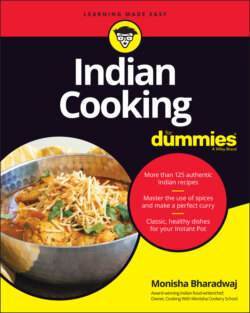Читать книгу Indian Cooking For Dummies - Monisha Bharadwaj - Страница 26
Goa and the Portuguese influence
ОглавлениеAlthough most people think of Goa as a beach holiday destination, its culinary history is fascinating for what it did to all food in India. As the demand for spices grew in the Western world, Europeans set out in search of the lands that grew them. The Portuguese explorer Vasco da Gama reached the Malabar Coast in Kerala in 1498 and opened the routes for the spice trade.
The Portuguese invaded Goa in 1510 and brought great changes to the cuisine and culture of the region. Many Hindus were converted to Christianity, and people who had earlier not eaten beef and pork began to cook these foods in their homes.
The Portuguese brought to India many ingredients that some people may think are native. Chilies, cashews, potatoes, and tomatoes forever changed the way recipes were prepared. Chilies replaced black pepper, and today, tons of chilies grow all over India, finding their way into almost every savory dish.
Leavened bread called pao is another Portuguese food that has endured over the centuries. It’s eaten dipped into sweet tea for breakfast or with curries like the vindaloo, another Portuguese-inspired Goan dish. Made up of the Portuguese words for wine and garlic — vino and alho, respectively — the dish has been interpreted by Indian restaurants around the world as the hottest curry on the menu. People outside India may think of it as being one of the country’s best loved curries, so predictable and constant is its presence on menus. In India, it’s a tangy, hot curry spiced with chilies, vinegar, and spices that is eaten locally in Goa and is not ubiquitously popular all over the country.
